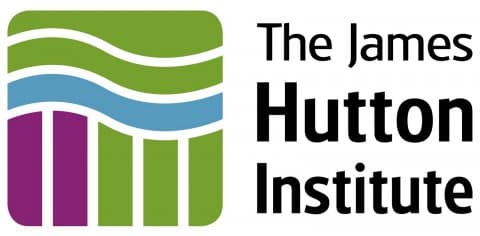Optiberry
With support of:



Optimal use of by-products from berry cultivation
Research approach and results
Raspberries and blackberries excel in micronutrients
The Optiberry project (FACCE) was a collaboration between researchers from HGU, JHI, ILVO, Innovation Support Center and Wilderhof. The project focused on finding an alternative and high-quality valorization route for strawberries, raspberries and blackberries that are not suitable for the commercial fresh fruit circuit (so-called non-premium fruit). This involved characterizing the non-premium fruit and evaluating the impact of processing on its functional components in order to identify further product opportunities. Indeed, we know from a thorough literature review that raspberries and blackberries excel in their micronutrients, compared to other fruits. For example, raspberries contain high amounts of manganese, magnesium and vitamin B3. They also contain high amounts of fiber. Blackberries score high in manganese, vitamin B3, vitamin K and also fiber. Strawberries contain high levels of vitamin C.
Composition of Scottish, German and Belgian varieties
Within Optiberry, freshly harvested berries, both in Germany, Scotland and Belgium were analyzed at 4 time points during the harvest season, and for different varieties. Thus, the levels of vitamins, organic acids, sugars and polyphenols were determined. For sugar, we see that the glucose and fructose content of Belgian raspberries decreases as a function of harvest time, whereas sucrose increases. For Scottish raspberries, we see more fluctuation during the season. For blackberries, we see an increase in fructose and sucrose. The glucose and fructose content was higher in the Belgian strawberries compared to the Scottish, while the Scottish strawberries contained more sucrose. Overall, the Scottish strawberries contained slightly more sugar. For malate (malic acid) we see an increase as a function of harvest time in strawberries, with the exception of the last harvest time of Scottish strawberries.
Strawberries score high in ascorbic acid (vitamin C) content. The ascorbic acid content of strawberries is factor of 6 higher than that in raspberries and even a factor of 10 higher than that in blackberries.
There is a difference in ascorbic acid content between different strawberry varieties. For example, the Eduka scores higher. There is no difference in ascorbic acid between the same varieties grown in Belgium and those grown in Scotland.
Different types of anthocyanins (form of polyphenols) were found in the 3 types of berries. The following two components were found in the 3 types: Cyanidin 3-O glucoside (1) and Pelargonidin 3-O glucoside (2). Component 1 was mainly present in blackberries and raspberries. Component 2 was then mainly present in strawberries.
Spiral filter press for juice and puree production
In the sequel, the non-premium berries were processed through innovative technologies into food products. Here, the impact of processing on quality was also further investigated. Thus, the berries were processed into juices via 2 pressing technologies (spiral filter press, and hydraulic press). Based on these juices, several derived products were developed such as nectar, multi-fruit juices, wine, cider. Based on the non-premium fruits, purees were also developed using two technologies: the spiral filter press and finisher. Again, the quality was monitored at different storage temperatures and times. The results show that functional components are better preserved after using the innovative spiral filter press compared to hydraulic filter press. Regarding puree, applying spiral filter press resulted in higher content of vitamin C and total anthocyanins in strawberry and raspberry puree, but higher content of total anthocyanins was observed in blackberries after using finisher. The total carotenoid content differed only slightly between the applied technologies, with the highest levels found in the blackberry puree.
In general, strawberry juice scores high in vitamin C, blackberries score high in anthocyanins but low in vitamin C.
To make the story circular, the valorization of the pulp after pressing was also investigated further. This included tests on the extraction of functional components from the berry pulp. The research looked for the right ratio of ethanol to water and extraction temperature for the extraction of anthocyanins and polyphenols. For both, 60% was found to be the best condition. The highest amounts of anthocyanins were extracted from the blackberry pulp. Most polyphenols were extracted from the strawberry pulp. The extracts were then also applied in model systems to evaluate their potential in cosmetic applications (antioxidant) and food applications (dye).
From sports gel to apero
To assess the market opportunities of the non-premium derivative products, a market study was done. Initially, a preliminary study was conducted to decide which products we would put more focus on. Thus, through this exercise we arrived at: an apero drink, sports gel and the existing Boosthie juice from Wilderhof. Next, 2 co-creation sessions were organized where a consumer panel was used to select the most promising product ideas for further product development. This resulted in 4 business models in the form of a business model canvas (BMC) that provided more insight into the feasibility of the different cases.
Based on the insights within the project, some concrete partnerships were evaluated between Wilderhof and food companies, with the aim of further reducing non-premium fruit.
Source: Het Optiberry Project (FACCE) - Food Pilot
Toegang tot de projectresultaten
Het bedrijf Wilderhof is eigenaar van de resultaten in dit project.
Project partners
ILVO managed and coordinated the project. Implementation was in the hands of following companies and partners:
- Wilderhof
- Pcfruit
- Boerenbond
- The James Hutton Institute (UK)
- Geisemheim University (D)
- Flanders' FOOD and Alice down the rabbit hole supported Wilderhof as subcontractors by organising co-creation sessions to come up with new product and business ideas based on the research results. Ideas were selected and evaluated using the Business Model Canvas method.
Questions or comments?
Contact Food Pilot: The Optiberry project (FACCE) - Food Pilot
Contact person FF

From apple tree to innovation: meet B3ET

Sustainable animal feed from sweetcorn cobs: meet Trotec








